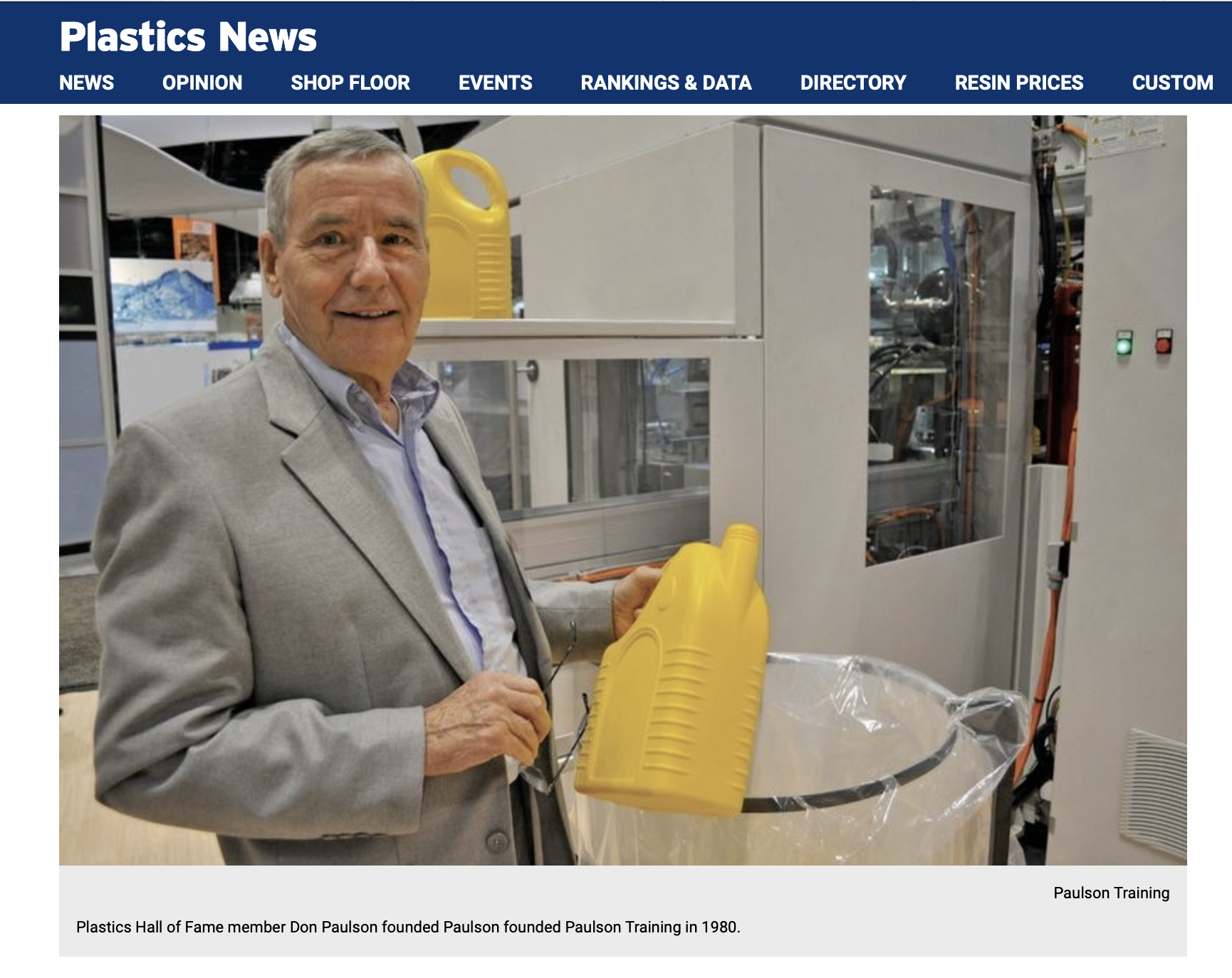 Well, we took a little time off this summer from writing blog posts. Not because there was nothing to talk about, but rather to focus on some very exciting new projects, partnerships and ideas that Paulson Training is involved with. More about those in future blogs posts. Right now, its time to get back to business.
Well, we took a little time off this summer from writing blog posts. Not because there was nothing to talk about, but rather to focus on some very exciting new projects, partnerships and ideas that Paulson Training is involved with. More about those in future blogs posts. Right now, its time to get back to business.
With the Labor Day weekend over and the “unofficial” end of summer, kids are returning to school, students are returning to college and plastics manufacturing companies are getting busy(er) than ever. All of this means more people, young and old, are shifting into “learning mode”. If you are a supervisor or manager at a plastics manufacturing company, you probably are looking for ways to get new hires up-to-speed quickly and get your existing shop floor employees working like a finely tuned machine. This requires a little planning and investment.
At Paulson, we’ve been very busy this summer helping several large multi-plant processors – injection molders, extrusion companies, thermoformers – get ready for the post-labor day re-focus on growing their business with higher productivity, fewer problems and training systems that produce fully trained, qualified production floor workers in a fraction of the time and at a fraction of the cost of on-the-job training.
But the problem is, we should be even busier. In fact, all trainers in the plastic’s industry should be busier.
Even today, with all the evidence that training investments are worth it, that the skilled labor shortage is very real and impacting the plastic’s industry negatively and that there is increasing pressure from competition, most companies still DO NOT have formal training systems in place for their production floor employees.
It’s not difficult, it doesn’t cost much to get started and the payback is lightning fast. But you do have to do some planning and you will have to make some investment.
The “planning part” is to assure that you get the most bang for your buck in the “training investment part”. And it’s important to remember that when we’re talking about investments for employee training, it’s not whether you’re going to spend money on training, it’s how you’ll spend that money.
Either you’re going to train your employees or they’re going to train themselves. And which one do you think is more expensive?
Kicking off a training initiative doesn’t take long. The planning involves identifying those job functions that need training the most. Start with those employees. Find out  what they know right now (our skillcheck online assessment works very well). Once you’ve identified the weak and strong areas of knowledge, you’ll have a nice roadmap for deploying your training dollars in the most effective way. That’s it.
what they know right now (our skillcheck online assessment works very well). Once you’ve identified the weak and strong areas of knowledge, you’ll have a nice roadmap for deploying your training dollars in the most effective way. That’s it.
Start small and gradually build your training program in layers. While you can deploy a comprehensive training program (system) all at once, you’ll need some help to avoid the “rookie” mistakes that we’ve seen most companies make. And you see a lot of the same training mistakes when you’ve been in the plastics training business for 35 years.
I recently had a conversation with a long-time Paulson customer (30+ years). He owns a mid-sized injection molding company in the mid-West.
 He has been using the exact same training system for over 30 years (he’s upgraded the content, but his training system hasn’t changed). All new hires are given an assessment to measure current injection molding knowledge and skills. They then spend a week going through various Paulson injection molding courses plus his own internally developed training. Then it is out to the production floor with an experienced employee. The Paulson portion of the training continues throughout the process.
He has been using the exact same training system for over 30 years (he’s upgraded the content, but his training system hasn’t changed). All new hires are given an assessment to measure current injection molding knowledge and skills. They then spend a week going through various Paulson injection molding courses plus his own internally developed training. Then it is out to the production floor with an experienced employee. The Paulson portion of the training continues throughout the process.
At the end of phase 1 (usually 6 or so months later), they get an “at-the-machine” proficiency test. Their level of proficiency determines their pay scale. If they want to make more money, they need to be worth it. So they can apply to take more training. When they prove higher levels of injection molding expertise and there is a job opening, they get a promotion and a raise. In a sense, each employee can to decide how far to take their molding expertise.
It’s not a complicated injection molding training system and he has literally been using it with great success for over 30 years.
This is a very profitable injection molder… easily in the top 20%. Most injection molders in that top 20% have robust training systems. So we would encourage you, in this post-labor day back to work time of year to consider starting, upgrading or refining your training systems.

Craig Paulson, President Paulson Training Programs, Inc



